Surely many aquarists have heard that chlorine will leave faucet water after some time. But exactly how long does it take for tap water with Chlorine to be safe for fish? Can the clearance be full without the use of chemicals? What about Chlorine’s cousin – Chloramine? These questions and more will be answered in this article!

There are numerous ways on how to remove chloramine from tap water as well, but is evaporation one of them?
Is this an efficient way for dechlorination?
Chlorine is the go-to choice for water facilities because it is cheap and very hostile to bacteria.
It is also rather harmless to humans.
With our friends from EPA regulating things all over the place, we can feel at least a little safe, right?
Maybe.
But what about our pet fish?
Chlorine in tap water is quite toxic to them (some of us have learned that the hard way).
Dechlorinating tap water has become a healthy habit for every fishkeeper out there.
There are times, however, when we can’t really get our hands on them sweet water conditioners.
And we find ourselves wondering…
How long does it take for Chlorine to fully evaporate from tap water?
Depending on its levels of content, the evaporation time for chlorine from tap water can be estimated:
2 ppm of Chlorine will take up to 4 and a half days to evaporate from 10 gallons of standing water. Ultraviolet light, water circulation, and aeration will significantly speed up evaporation. If, however, the same amount of water gets boiled, chlorine will evaporate in less than 8 minutes.
This makes Boiling the fastest method to remove Chlorine from water. Chloramine, however, doesn’t evaporate as quickly.
In fact, it is pretty stable.
The reason behind this is an additional molecule bond that’s not present in chlorine.
The bond makes chloramine less reactive so it doesn’t produce any disinfection byproducts or break down easily like chlorine. It’s why companies use chloramine in the first place.
Chloramine does not gas off as easily and it is more long-lasting.
Chlorine VS Chloramine in our tap water?
Why you should care to know the difference:
Free chlorine is being kept in drinking water via pipe pressure.
As soon as it leaves the sink there is no pressure to hold it inside anymore, and it starts to naturally gas off.
Chloramine, on the other hand, represents the chemical bond between chlorine and ammonia which makes it quite stable.
There’s a good chance that your local authority uses chloramine for water disinfection. This is the reason behind elevated ammonia levels after dechlorinating water ready to go in an aquarium with a commercially available water conditioner.
The dechlorinator breaks the bond of chloramine and neutralizes the released chlorine, but ammonia is still present and may need to be lowered through other means. I’ve said this many times, but I guess it’s better to be safe than sorry – always read the label on the products you use in your aquarium.
Fortunately, there are commercially available all-in-one solutions that take care of both chloramine and ammonia. Prime, for example, converts chloramine into chloride but takes care of the leftover ammonia as well.
Some all-in-one dechlorinators like Fritz’s Complete can even be used for lowering nitrites and nitrates during a spike. Having a good dechlorinator like that is a recommended staple equipment for fish tank owners.
How long it takes to boil Chlorine and Chloramine out of drinking water?

Boiling water does remove and is one of the most efficient natural methods of clearing tap water from Chlorine. This is because heat quickly reduces the ability of water to hold dissolved gas.
Here’s how fast chlorine and chloramine would off-gas when being boiled away:
The evaporation estimate of 1 ppm of Chlorine when boiling 10 gallons of water is just above 3.5 minutes. However, it will take around 60 minutes (1 hour) of boiling to let out 1 ppm of Chloramine in the same amount of water.
Tap water chemical contents vary across states and countries.
There are places where water is either undrinkable or highly chlorinated.
The best way to gain insights on your particular tap water is to test it.
To do this you’ll need to use a water test kit to measure the amount total and free chlorine. If the total chlorine is equal to the free chlorine, it means your water treatment facility is disinfecting water through chlorine only.
In case the free chlorine is lower, then you’ll need to subtract it from the total chlorine to find the amount of chloramine. Example: Let’s say your test kit shows 1.0 ppm total chlorine, and 0.4 ppm free chlorine. When you subtract the free chlorine (0.4 ppm) from the total chlorine (1.0 ppm) you’ll end up with 0.6 ppm chloramine.
Evaporation times – overview chart
Where I live, the total chloramine content is between 2.7 and 2.9 ppm (parts per million).
Being a fan of the scientific approach, I did a couple of tryouts and wrote down my results.
Some additional research showed that Chloramine has around 3.5 times longer time estimate for evaporation than chlorine, depending on temperature and pH levels. This would mean that if it only takes 1 day for chlorine to evaporate it will take chloramine a little more than 3.
Throwing in additional treatment techniques would change that ratio.
My water was usually around 7.5 – 7.6 pH during the tests. I did take some measures. Comparing them I acquired some pretty interesting data.
I took the liberty of conjuring a table with estimated chlorine and chloramine evaporation-time periods:
| Water treatment | Quantity in Gallons / Liters | 1 ppm of free Chlorine | 1 ppm of Chloramine |
|---|---|---|---|
| Undisturbed | 10 gal / 37.85 liters | up to 55.3 hrs | up to 173.4 hrs |
| Circulated | 10 gal / 37.85 liters | up to 9.6 hrs | up to 70 hrs |
| Circulated, Aerated | 10 gal / 37.85 liters | up to 9.2 hrs | up to 67.6 hrs |
| Boiling | 10 gal / 37.85 liters | up to 3.7 minutes | up to 64.8 minutes |
For example, if your tap water tests for 3 ppm of Chlorine, multiply the middle column by 3.
With this chart, you can calculate how long it would take for your tap water to become safe for your pet fish, depending on what chemicals your local water facility uses to disinfect it.
It would be wise to call your authorities and ask which of the two chemical compounds they’re using for disinfection.
I did the tests in my garage to ignore the UV light factor (which, by the way, can be a gamechanger, but more on that below).
What are other ways to get rid of the chlorine in your tap water in a natural way?
To naturally dechlorinate tap water try these methods:
Campden tablets
I will only mention this because I know it works.
My friend, who’s an avid home beer brewer shared this with me once (Thanks, Em!).
He uses Campden tablets (Sodium or Potassium Metabisulfite) to sterilize the water for brewing.
He swears by it being really effective in removing chlorine AND chloramine.
What did I do?
I did my research.
Turns out people did use it to dechlorinate their fish tank water.
So I borrowed some from Em and gave it a go.
It absolutely works, by the way.
No ill effect on my fish.
Plus it’s much cheaper than commercial conditioners.
The only catch is that you can purchase the stuff from specialized brewing shops, as far as I’m aware.
I moved away from where Em lived, so I lost my “dealer”.
One of those days, I may look into acquiring some K-meta again…
Anyway, after Em was kind enough to share his dechlorinating adventures with me I became interested in the subject.
Again, I performed heavy research.
Evidently, there are even more natural ways to dechlorinate water.
Sodium thiosulfate
…is the name and destroying all the bad chlorine is the game.
And it’s no wonder.
After all, sodium thiosulfate is the active ingredient in many commercial dechlorinators such as API’s Tap Water Conditioner.
So with the proper knowledge, you can actually use sodium thiosulfate crystals to create a dechlorinating solution.
The only drawback to this method is that it may cause an ammonia spike if your tap water has been treated with chloramine.
Assuming this doesn’t stop you, you’ll need to dissolve 0.5 oz sodium thiosulfate crystals in a cup of water to make the solution.
After the crystals get dissolved, you should be able to dechlorinate 1 gallon of water with a single drop of the solution.
However, I recommend you run a sample test to determine the exact amount more accurately.
Here’s how to calculate the minimum amount of sodium thiosulfate solution you’ll need to dechlorinate tap water:
- Fill a five gallon bucket with water and measure the level of total chlorine.
- Dissolve 1/4 tsp sodium thiosulfate into the water.
- Wait for a few minutes, then test the total chlorine again.
- If there’s any chlorine left, add another 1/4 tsp of the solution and make another test to determine the change.
- Repeat until you achieve a desired result.
Moving water
Another useful tip Em gave me about dechlorination is that the more surface area the water has the faster the chlorine will evaporate.
Apparently, chlorine evaporates faster when in contact with air.
Thus recirculating the water will also speed up dechlorination.
Em told me a common old practice where you just move water from one container to another a couple of times.
This gives the water plenty of movement and contact with the air so the chlorine evaporates faster.
If you are okay with looking like a madman you can try it.
I know I wasn’t, so I came up with a workaround.
Following this logic, I’ve found that using airstones will speed up dechlorination by almost a half.
One more thing you can do to speed up the process is reaching out to the… sun.
Ultraviolet light
Ultraviolet light gives chlorine AND chloramine enough energy to do some mysterious physics and makes them leave the water significantly faster.
My duty would include maintaining the proper pH and Chlorine levels of the pool, to keep it safe and bacteria-free for our residents.
Some pools kept their chlorine levels steady throughout the sunny days and some couldn’t.
Baffled, I spoke to my supervisor, only to find out that the ones that had stable chlorine values were treated with UV protection in the form of cyanuric acid.
It was why they weren’t losing chlorine in the sun.
I also have two fellow aquarists (one keeps a reef tank and the other – a pond), reporting that leaving a bucket (read 5 gallons) of water sit in the sun for a day would neutralize most Chloramine traces. And while you can remove chlorine from water by leaving it out in the sunlight, it will certainly take you more than a day.
Or a week if it’s treated with chloramine.
Don’t judge them, by the way – every fishkeeper has a moment when they don’t have access to an RO/DI device or a dechlorinator.
Some water facilities do use a method called low-pressure UV dechloramination, so there is merit to their anecdotes.
Activated carbon
Activated carbon filters will absolutely get rid of the nasties.
There are such filters in most pitchers and also RO systems.
However, the carbon filters in pitchers will wear out way faster when dealing with chlorine or chloramine.
If you fancy the purifying tank idea, you can set up a filter media like this, to fasten the removal.
Author’s note: There’s more than one type of carbon filter. Basically, all of them will remove chlorine without issues. Chloramine, on the other hand, can be effectively filtered by what’s called “surface-modified” activated carbon. You can sometimes find this type of carbon filter labeled as “Catalytic carbon filtration”.
RO/DI water filtration systems
RO/DI/Distilled water is your best option. These all refer to the way the water was purified:
- RO – Reverse Osmosis purification;
- DI – Deionized water;
- Distilled – water purified by evaporation, also known as distillation.
These purifying methods will get rid not only of chlorines but also everything else that might harm your fish. If you plan on maintaining a reef tank, proper water purification is a must, as marine pet fish are VERY sensitive to the chemicals in tap water.
Distillation can be costly, but if money is not a factor for you (which I doubt if you’re reading this) then go for it. Reverse Osmosis and Deionization units that are suitable for coral reef aquariums come at the reasonable price and they’re a very cost-effective investment.
They will save you many headaches, not only for dechlorination but also for algae-favoring phosphate levels and whatnot. It is really the purchase you should be after when you’re done gearing up your saltwater aquarium.
Don’t forget to remineralize any type of purified water before using it in an aquarium (the link leads to a thorough explanation I wrote on purified water and fish tanks). That’s because fish get their vital minerals from water so you need to add the good ones back to water that’s been purified.
Any water that goes in your fish tank should have some minerals in it, or you risk killing you fish. Putting a fish in water that’s too soft can also impair the fish’s fluid retention capabilities, and may result in weird swimming and pressed organs.
Vitamin C
Vitamin C is well known for its immunity enhancing properties but less so for its chlorine neutralization capabilities.
According to a report published by the USDA, both forms of vitamin C are great at neutralizing chlorine. And fortunately enough chloramine as well.
To get rid of chlorine from your tap water you’ll need to add 2.5 parts ascorbic acid for every part of chlorine.
Once added to the water, the ascorbic acid will need five minutes to take effect.
Keep in mind that this might lower the pH so it would be a good idea to test the water parameters before you add the water to your tank.
Set up your own DIY dechlorinator at home
Following these thoughts, here’s how to remove chlorine from tap water without chemicals at home:
You can set up a “purifying” glass container that sits under the sun with a filter, or perhaps, a wave maker like the ones people often use in their saltwater aquariums, and an air pump. This setup may take a day or two of running, but it will eventually get you rid of all the chlorine.
To me, this sounds super expensive just for the sole purpose of dechlorinating, even though the cheapest gear will do the work.
Still, I am obligated to mention it, as I know people that are doing it.
Technically it still counts as evaporation and you’re doing it without any chemicals.
My Final Takeaway
Chlorine and chloramine can be removed from the water by off-gassing, but it will take some time.
However, there are many ways to hasten the process and still get the desired results.
You can share with me how it went for you, and we can have a nice discussion in the comments.

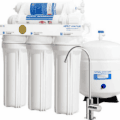

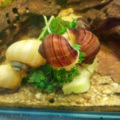
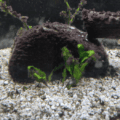

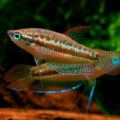

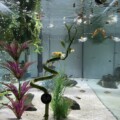
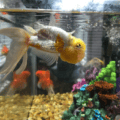
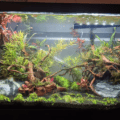
Thank you for this article. I did not know about chloramine but have had skin eruptions from chlorine for 5 years. I am interested in removing chlorine and chloramine from my tap water for cooking and and drinking. I have been boiling and cooling then a Zero Water filter pitcher. The company rep I spoke to said the filtration with this pitcher does remove chlorine but did not specify over what period of time, so I boil. I would like to know so I can use just the pitcher’s filtration to have drinkable water if this is practical. Boiling / cooling has rusted my cook stove burners. I prefer to obtain my drinking water at home. I want to know what is in it as I am sensitive to chlorine. Now realize maybe the chloramine too.